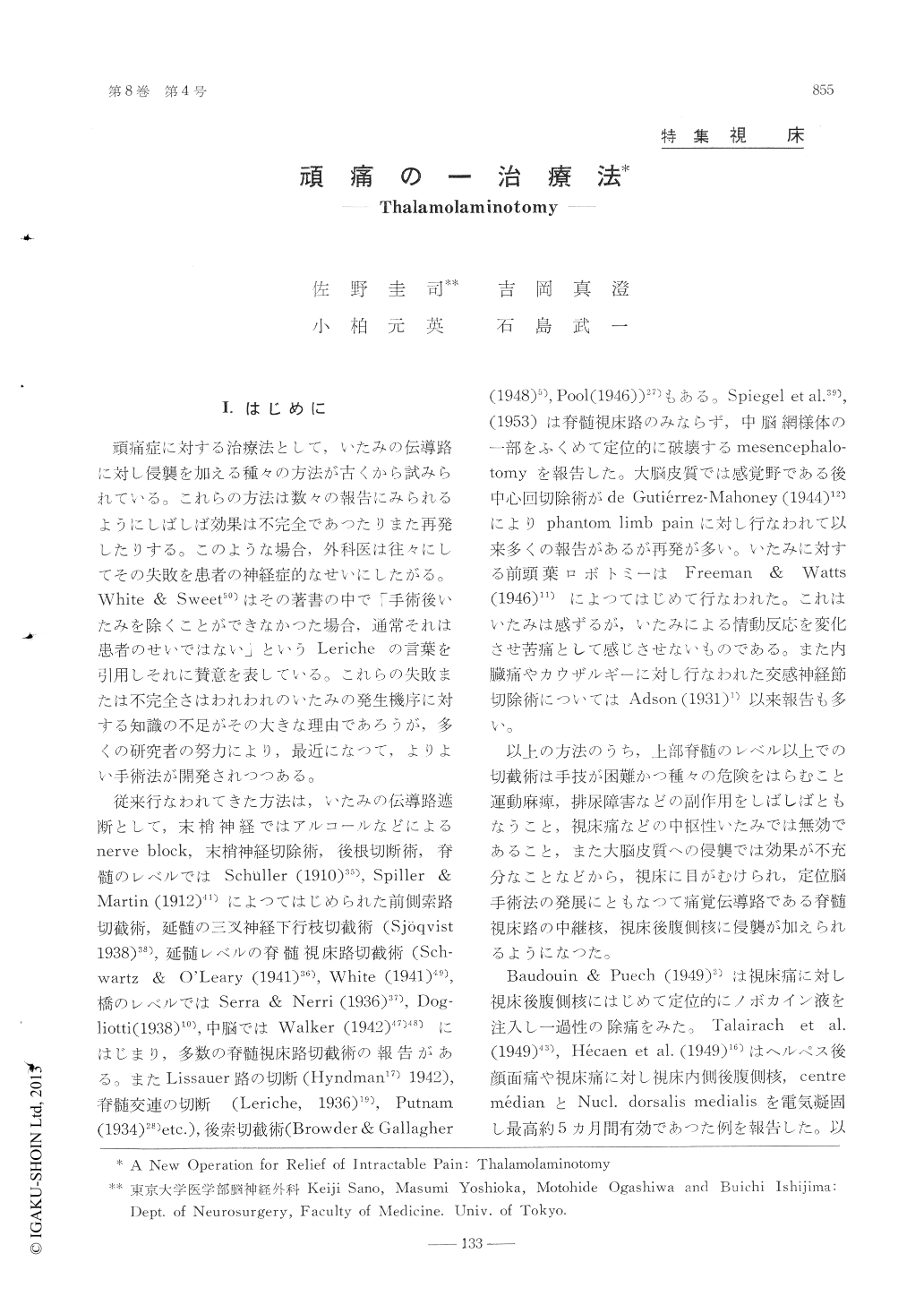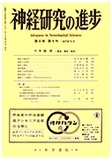Japanese
English
- 有料閲覧
- Abstract 文献概要
- 1ページ目 Look Inside
I.はじめに
頑痛症に対する治療法として。いたみの伝導路に対し侵襲を加える種々の方法が古くから試みられている。これらの方法は数々の報告にみられるようにしばしば効果は不完全であつたりまた再発したりする。このような場合,外科医は往々にしてその失敗を患者の神経症的なせいにしたがる。White & Sweet50)はその著書の中で「手術後いたみを除くことができなかつた場合,通常それは患者のせいではない」というLericheの言葉を引用しそれに賛意を表している。これらの失敗または不完全さはわれわれのいたみの発生機序に対する知識の不足がその大きな理由であろうが,多くの研究者の努力により,最近になつて,よりよい手術法が開発されつつある。
A new operation for relief of pain was proposed, namely thalamolaminotomy. The procedure consistsof destruction of the posterior half of the internalmedullary lamina in the thalamus by means ofstereotaxically inserted needles using electrocauteryand mechanical manipulation.
The operation was carried out on five cases ofintractable pain, either thalamic, tabetic, trigeminalor causalgic in origin, resulting in remarkablealleviation of pain without sensory disturbances. Electrical stimulation of this area produced paresthesia in one half or whole of the body withdisappearance of pain.
This thalamolaminotomy was introduced by usoriginally with the aim of cutting the pathwaysbetween the non-specific and specific sensorythalamic nuclei under the hypothesis that thalamicpain may be due to the abnormal impulses fromspecific thalamic lesion, aggravated by the circuitsbetween the non-specific and specific thalamic nuclei.
Since the internal medullary lamina includesNucleus centralis lateralis etc., in which C-fibersascending in the spinothalamic tract and othersterminate according to Nauta et al., the beneficialeffects of the operation may be not only due to thedisconnection of the above mentioned circuits, but also due to destruction of the region where C-fibers terminate.

Copyright © 1964, Igaku-Shoin Ltd. All rights reserved.


